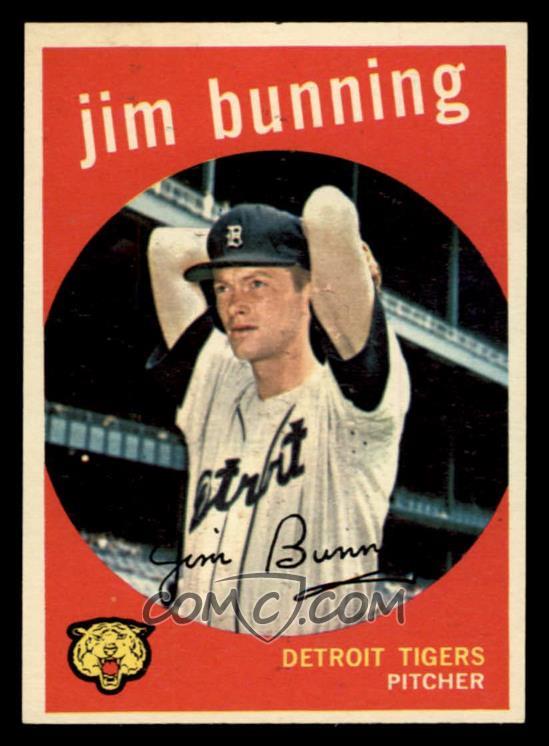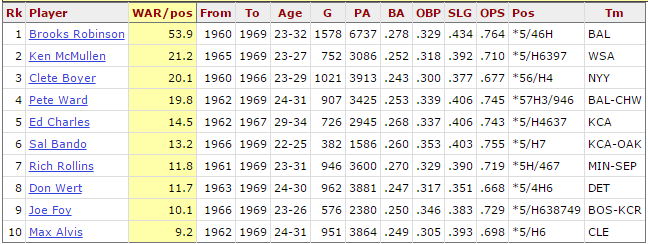 Hall of Famer Jim Bunning has died at the age of 85. Author of the first NL perfect game of the modern era, Bunning recorded over 3500 IP and 200 wins in a 17 year career, mostly for the Tigers and Phillies. While often overlooked among the pioneers of the modern, high strikeout pitcher, Bunning established standards for consistency and longevity that few pitchers since have been able to match.
Hall of Famer Jim Bunning has died at the age of 85. Author of the first NL perfect game of the modern era, Bunning recorded over 3500 IP and 200 wins in a 17 year career, mostly for the Tigers and Phillies. While often overlooked among the pioneers of the modern, high strikeout pitcher, Bunning established standards for consistency and longevity that few pitchers since have been able to match.
More on Bunning after the jump.
Bunning pitched over 1000 innings in the Tiger farm system before finally making the big club to stay at age 25 in 1957. He made the most of that opportunity, leading the AL in IP and Wins as he posted what would be the only 20 win season of his career (he would win 19 four times, and 17 thrice). Thus began a streak of 11 seasons of 200 IP and 175 strikeouts, still the longest in majors history and matched only by Tom Seaver (1968-78). For some perspective, the longest live ball era streak of such seasons before Bunning was only 5 by Dizzy Dean (1932-36), or 6 by Bob Feller (1938-47), excepting seasons that Feller lost, or mostly lost, to military service.
Bunning’s eleven year run featured 10 seasons with WHIP below 1.3, ten with BB/9 under 3.0, ten with 3 WAR or better, nine with 110 ERA+, eight with 17 or more wins. You get the idea; his teams knew what to expect from him each year, and he rarely disappointed. Among all live ball era pitchers aged 25-35, Bunning ranks fourth in IP, third in starts, seventh in shutouts and eighth in strikeouts.
If Bunning had a bad year in his big run, it came in 1963 with a 12-13 record and 3.88 ERA. At age 31 and with more than 1750 IP in just 7 seasons (plus those 1000+ minor league innings), the Tigers probably figured they were being shrewd in parting with Bunning before he really started to break down. How wrong they were; instead, Bunning would turn in the best four year run of his career for the Phillies, topping 30 WAR with 141 ERA+ and averaging almost 300 IP for those seasons. Among live ball era pitchers aged 32-35, Bunning stands first in starts, second in WAR, IP, shutouts and ERA, and third in strikeouts.
For his 1957 to 1967 seasons, Bunning started 399 games, 230 of them won by his team, a .576 winning percentage (93-69). When he didn’t start, that winning percentage dropped to only .509 (82-80). So, with Bunning on the mound, his teams morphed from also-rans to pennant contenders. Included in these 11 seasons were his perfect game against the Mets in 1964, another no-hitter against Boston in 1958, and a one-hitter against Houston, four weeks before his perfecto. To these, Bunning added 7 two-hitters and 15 three-hitters. Bunning struck out a career high 14 Yankees on Jun 20, 1958, then tied for the Yankee franchise record for most strikeouts in a game.
For the years he was active (1955-71), Bunning ranks 1st in IP, starts, wins and strikeouts, 4th in shutouts and 5th in complete games. Bunning was the first pitcher to record 1800 IP in each league, a feat matched since only by Fergie Jenkins, Gaylord Perry, Nolan Ryan and Randy Johnson. Bunning is also the oldest (at age 34-35) of seven live ball era pitchers (Bob Feller, Sandy Koufax, Bob Gibson, Fergie Jenkins, Mickey Lolich and Nolan Ryan are the others) to record 300 IP and 250 strikeouts in consecutive seasons (Jenkins did it four seasons in a row; nobody else more than two).

